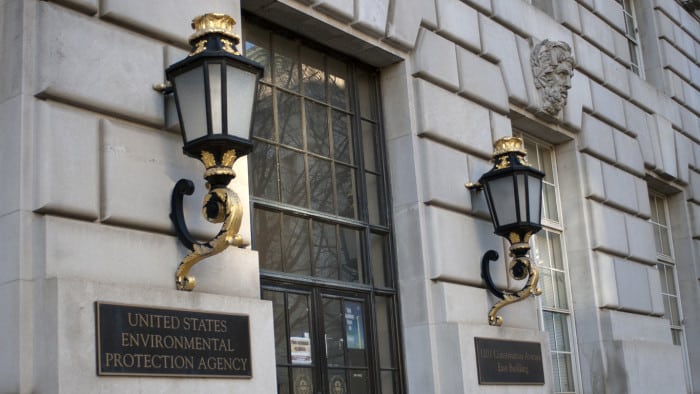
Under a Supreme Court issued stay of the implementation of the Environmental Protection Agency’s Clean Power Plan, some states have decided to stop working on compliance, others are moving ahead full bore, but most fall somewhere in the middle, not working with gusto, but at least making some preparations, according to Michael Tubman, director of outreach with the Center for Climate and Energy Solutions (C2ES).
“I think there’s a tendency for a lot of folks to look at life after the stay as a binary: either states are doing nothing or they’re doing everything and have pretended like the stay doesn’t exist,” Tubman said Monday during a panel discussion at the Energy Information Administration’s annual Energy Conference in Washington, D.C.
There are certainly states at each end that that spectrum, Tubman said. Texas has vowed not to work on anything related to the Clean Power Plan during the stay. California and Washington, on the other hand, have been pursuing state actions even more stringent than those mandated in the rule, which requires states to develop action plans to meet EPA set emissions reduction goals.
However, Tubman said that based on outreach to the states done by C2ES, “in between, the vast majority of states are somewhere on that continuum. They may be writing what their plan might be in draft form, or they might just be thinking about it; they might be working with businesses in a public process, or they might still be having private discussions that aren’t public notice,” he explained.
The Supreme Court issued a stay of the Clean Power Plan in February, freezing implementation until a massive legal challenge against the rule makes its way through the federal legal system. Currently, the case is before the U.S. Court of Appeals for the D.C. Circuit, where a nine-judge panel is scheduled to hear oral arguments in September. The case is expected to be decided by the Supreme Court in late 2017 or early 2018.
Under the stay states aren’t legally required to take any action on the regulation, and any deadlines that pass while the rule is under legal challenge will be pushed back – though it has not been determined what will happen to later milestones.
Most states have decided they would rather be safe than sorry, according to Tubman. “Everyone is still having conversations to try to understand what the end result should be for states because they know that at some point the stay will be lifted or there will be some type of carbon constraint on their economy, and they want to figure out what the best route is for their state,” he said. “They don’t want to be caught flat-footed.”
In its outreach to states, C2ES has discovered that the state-level Clean Power Plan action has been beneficial for several reasons. “In many states, it may seem hard for us to believe but this type of public process might have been the first time the public utility commissioners [and] environmental commissioners ever talked. That’s something that we hear quite frequently. That’s really important because it totally changes the way states can think about the future of their energy sector,” he said.
Even more important, according to Tubman, is that in having these conversations many states have discovered that addressing carbon emissions is a more viable and valuable action than they might have thought previously. “They have found that reducing their emissions is going to be lower cost and require less policy push than they had thought. That is one of the key takeaways of the experience to states thus far, and that’s why a lot of them are continuing to have these conversations. They see a potential to continue having a productive conversation among stakeholders and finding a good pathway for their states,” he said.
Many states have been in contact with the EPA since the stay was issued, requesting information on a proposed federal implementation plan and model trading rules and the Clean Energy Incentive Program, a voluntary initiative for states aiming to go above and beyond what is called for in the Clean Power Plan. In a letter sent in late April, a group of 14 states requested that EPA provide a final model rule.
The federal implementation plan and model rules were proposed before the stay was issued and the EPA has not decided yet how it will move forward with finalization under the stay, according to Joseph Goffman, associate assistant administrator and senior counsel for EPA’s Office of Air and Radiation, who also participated in the panel discussion.
“At this point we still have not made a decision, given the pendency of the stay, what our next step is going to be, whether we’re going to move from proposal to a final rule or whether we’re going to devise some other less formal instrument to move the ball forward in terms of the issues that we raised in the model trading rule,” he said.